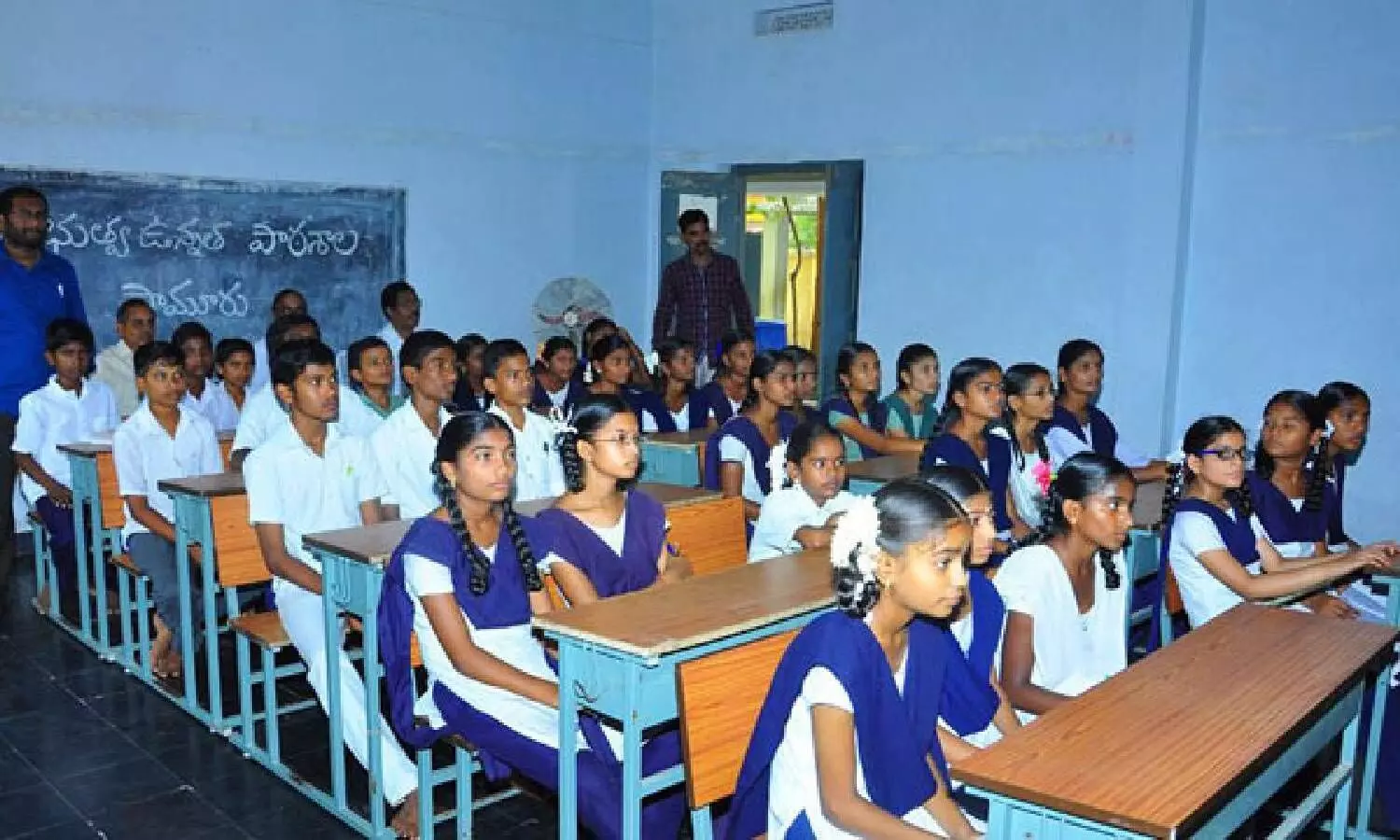Aadhar-based payment system for Amma Vodi scheme is anti-poor: HRF
According to official figures, 43.5 lakh people benefitted from the scheme in 2021. The next cash transfer for Amma Vodi is scheduled for early June 2022.
By Newsmeter Network
Visakhapatnam: The Human Rights Forum (HRF) and Samalochana have demanded the withdrawal of the recent decision by the Andhra Pradesh government to change cash transfer under the Amma Vodi scheme and shift to the Aadhaar Payment Bridge (APB) system.
B. Chakradhar, the convenor of Samalochana, and V.S Krishna, HRF AP and TS coordination committee member, said Amma Vodi scheme was launched by the AP government as part of the Navratnas. Under the scheme, mothers of children belonging to BPL families get Rs. 15,000 per annum subject to certain eligibility criteria. The amount is directly credited to their accounts.
According to official figures, 43.5 lakh people benefitted from the scheme in 2021. The next cash transfer for Amma Vodi is scheduled for early June 2022.
The Amma Vodi scheme aims to enhance access to schools, ensure equity, assure quality education, reduce dropouts, achieve minimum learning levels, and help in the overall development of students from classes I to XII (intermediate education). This is to lay a strong foundation for increase in the overall gross enrolment ratio (GER) at primary and secondary levels of education, including higher education.
Till date, the Amma Vodi cash transfer was done through 'Account Based Payment' method. This meant that beneficiaries had to submit their bank account details to the school authorities who would in turn update the data in his/her Management Information System (MIS). The government would use the account details to transfer the money into the accounts.
However, it is feared that the manner in which the government is now seeking to transfer the money to beneficiaries will likely alienate lakhs of mothers across the state. This is because the mode of payment has now been shifted to Aadhaar Payment Bridge system. In this method, Aadhaar serves as the financial address of the beneficiaries and cash would be transferred to the bank account linked to the Aadhaar number. However, for the successful completion of the transfer, the bank account must be linked with the NPCI (National Payment Corporation of India) mapper. Failure to do so will result in cash transfer failure. In effect, this would result in many potential beneficiaries not being able to avail of the scheme.
The NPCI mapping is a complicated process about which the public and even bank staff are not fully aware. Thousands of people have NPCI mapping problems, particularly in the tribal areas. Moreover, the NPCI does not have enough banking infrastructure to solve problems associated with mapping.
It would be pertinent to recall that more than 2 lakh farmers across the state (as per data available on October 2021) were unable to get their payments under the Rythu Bharosa cash transfer scheme due to non-mapping by NPCI. Although payment failures can occur in both payment systems, resolution in the Aadhaar Payment Bridge system is overly complicated for citizens and frontline workers to handle.
The HRF members said the decision to change the payment system to Aadhar was unilateral, irresponsible, and anti-poor. The move also raises suspicion that the government is trying to exclude a large number of people from availing of the benefits of Amma Vodi. Such an important decision cannot be taken without meaningful consultation with the beneficiaries, they said.
It is worth recalling that the payment method for the Mahatma Gandhi National Rural Employment Guarantee Act (MGNREGA) was changed recently from Aadhaar to account-based payment method.